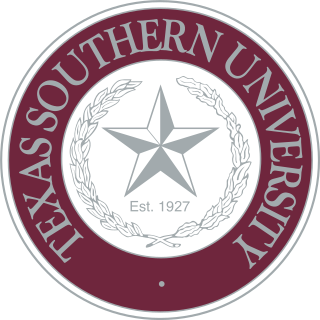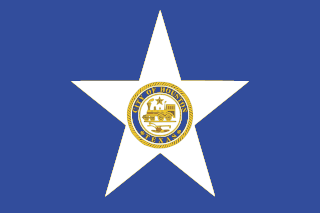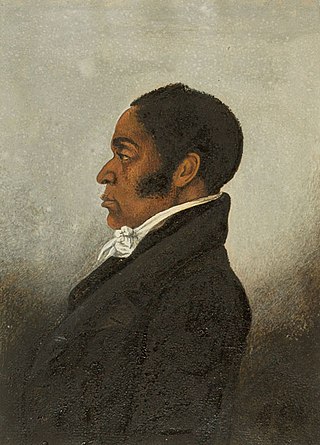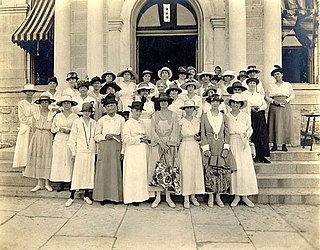
UNCF, the United Negro College Fund, also known as the United Fund, is an American philanthropic organization that funds scholarships for black students and general scholarship funds for 37 private historically black colleges and universities. UNCF was incorporated on April 25, 1944, by Frederick D. Patterson, Mary McLeod Bethune, and others. UNCF is headquartered at 1805 7th Street, NW in Washington, D.C. In 2005, UNCF supported approximately 65,000 students at over 900 colleges and universities with approximately $113 million in grants and scholarships. About 60% of these students are the first in their families to attend college, and 62% have annual family incomes of less than $25,000. UNCF also administers over 450 named scholarships.

Morgan's Point is located 30 miles east of Houston in Harris County, Texas, United States, located on the shores of Galveston Bay at the inlet to the Houston Ship Channel, near La Porte and Pasadena. As of the 2010 census, it had a population of 339. As of 2020, it has approximately 356 residents and is located within the La Porte Independent School District.

League City is a city in the U.S. state of Texas, in Galveston County, within the Greater Houston metropolitan area. As of the 2020 census, the city had a population of 112,129.

David Gouverneur Burnet was an early politician within the Republic of Texas, serving as interim President of Texas, Vice President of the Republic of Texas (1839–1841), and Secretary of State (1846) for the new state of Texas after it was annexed to the United States.

Texas Southern University is a public historically black university in Houston, Texas. The university is one of the largest and most comprehensive historically black college or universities in the United States with nearly 10,000 students enrolled and over 100 academic programs. The university is a member school of the Thurgood Marshall College Fund and it is accredited by the Southern Association of Colleges and Schools. It is classified among "R2: Doctoral Universities – High research activity".

Margaret Lea Houston was First Lady of the Republic of Texas during her husband Sam Houston's second term as President of the Republic of Texas. They met following the first of his two non-consecutive terms as the Republic's president, and married when he was a representative in the Congress of the Republic of Texas. She was his third wife, remaining with him until his death.

The Texan schooner Brutus was one of the four ships of the First Texas Navy (1836–1838) that during the Texas Revolution wreaked havoc on towns along the coast of Mexico, blockaded Mexican ports, and captured ships bound for Mexico with goods and munitions of war.
The Texas schooner Invincible was one of the four schooners of the Revolutionary Texas Navy (1836-1837). She began her service in January 1836 and immediately began attacking ships supplying the Mexican army in Texas, including capturing the United States merchant vessel Pocket and later the British ship Eliza Russell. Both of these actions caused diplomatic incidents between the Republic of Texas and the United States and the United Kingdom.

Maud Cuney Hare was an American pianist, musicologist, writer, and African-American activist in Boston, Massachusetts in the United States. She was born in Galveston, the daughter of famed civil rights leader Norris Wright Cuney, who led the Texas Republican Party during and after the Reconstruction Era, and his wife Adelina, a schoolteacher. In 1913 Cuney-Hare published a biography of her father.

Celestine Beyoncé Knowles-Lawson is an American businesswoman, fashion designer, and philanthropist known for establishing the brands House of Deréon and Miss Tina by Tina Knowles. She is the mother of singers Beyoncé and Solange Knowles, and, until 2011, was married to their father Mathew Knowles, the manager of Destiny's Child.

Tara Melaine Ruttley is Associate Chief Scientist for Microgravity Research at NASA Headquarters in Washington, DC. Prior to this, she was Associate Program Scientist for the International Space Station (ISS) at NASA's Johnson Space Center in Houston, Texas. Until 2007, she was lead hardware engineer for the ISS Health Maintenance System, leading a team of engineers whose job was to provide reliable medical equipment that kept astronauts healthy in orbit. She subsequently served as the lead hardware engineer for the ISS Human Research Facility. She served as an aquanaut on the NASA Extreme Environment Mission Operations 6 crew in July 2004.

The African American population in Houston, Texas, has been a significant part of the city's community since its establishment. The Greater Houston area has the largest population of African Americans in Texas and west of the Mississippi River. Black Enterprise has referred to Houston as a black mecca.

The Texas Heroes Monument is located in Galveston, Texas, and was commissioned by Henry Rosenberg to commemorate the brave people who fought during the Texas Revolution. The monument was built by New England Granite Works using Concord, New Hampshire, granite and bronze. The total cost was $50,000, and it was shipped before June 4, 1899. The sculptor of the monument was Louis Amateis. It is located at the intersection of Broadway and Rosenberg Avenue. It was unveiled on April 22, 1900.

In the USA, Black-owned businesses, also known as African-American businesses, originated in the days of slavery before 1865. Emancipation and civil rights permitted businessmen to operate inside the American legal structure starting in the Reconstruction Era (1863–77) and afterwards. By the 1890s, thousands of small business operations had opened in urban areas. The most rapid growth came in the early 20th century, as the increasingly rigid Jim Crow system of segregation moved urban Blacks into a community large enough to support a business establishment. The National Negro Business League—which Booker T. Washington, college president, promoted—opened over 600 chapters. It reached every city with a significant Black population.
James Dallas Burrus was an American educator, druggist and philanthropist from Tennessee. He and a brother were among the first three graduates of Fisk University, the first African Americans to graduate from a liberal arts college south of the Mason–Dixon line. After completing graduate work in mathematics at Dartmouth College, Burrus became the first professor of mathematics at Fisk University. He later continued his teaching career at Alcorn Agricultural and Mechanical College in Mississippi.

Rosanna Osterman was a Civil War nurse, philanthropist and pioneer of Galveston, Texas. Overall, she distributed approximately $75,000 to different charitable causes.

This is a timeline of women's suffrage in Texas. Women's suffrage was brought up in Texas at the first state constitutional convention, which began in 1868. However, there was a lack of support for the proposal at the time to enfranchise women. Women continued to fight for the right to vote in the state. In 1918, women gained the right to vote in Texas primary elections. The Texas legislature ratified the 19th amendment on June 28, 1919, becoming the ninth state and the first Southern state to ratify the amendment. While white women had secured the vote, Black women still struggled to vote in Texas. In 1944, white primaries were declared unconstitutional. Poll taxes were outlawed in 1964 and the Voting Rights Act was passed in 1965, fully enfranchising Black women voters.

Sam Houston was a slaveholder who had a complicated history with the institution of slavery. He was the president of the independent Republic of Texas, which was founded as a slave-holding nation, and governor of Texas after its 1845 annexation to the union as a slave-holding state. He voted various times against the extension of slavery into the Western United States and he did not swear an oath to the Confederate States of America, which marked the end of his political career.

Nancy Moffette Lea (1780–1864) was the mother of Margaret Lea Houston and mother-in-law of Sam Houston. She was an integral member of the Houston family, running the household when Margaret was ill or pregnant. She is believed to have helped her son-in-law convert and be baptized in 1854. In appreciation, she donated a bell to the Independence Baptist Church in honor of him. The wife of Temple Lea, she inherited an estate from her family that she managed. She purchased a cotton plantation which was operated by 50 enslaved people.
Eldorado Ballroom is a former nightclub in the Third Ward, Houston, on the other side of the road from Emancipation Park. The white brick and stucco Art Moderne building has 10,000 square feet (930 m2) of space.



















